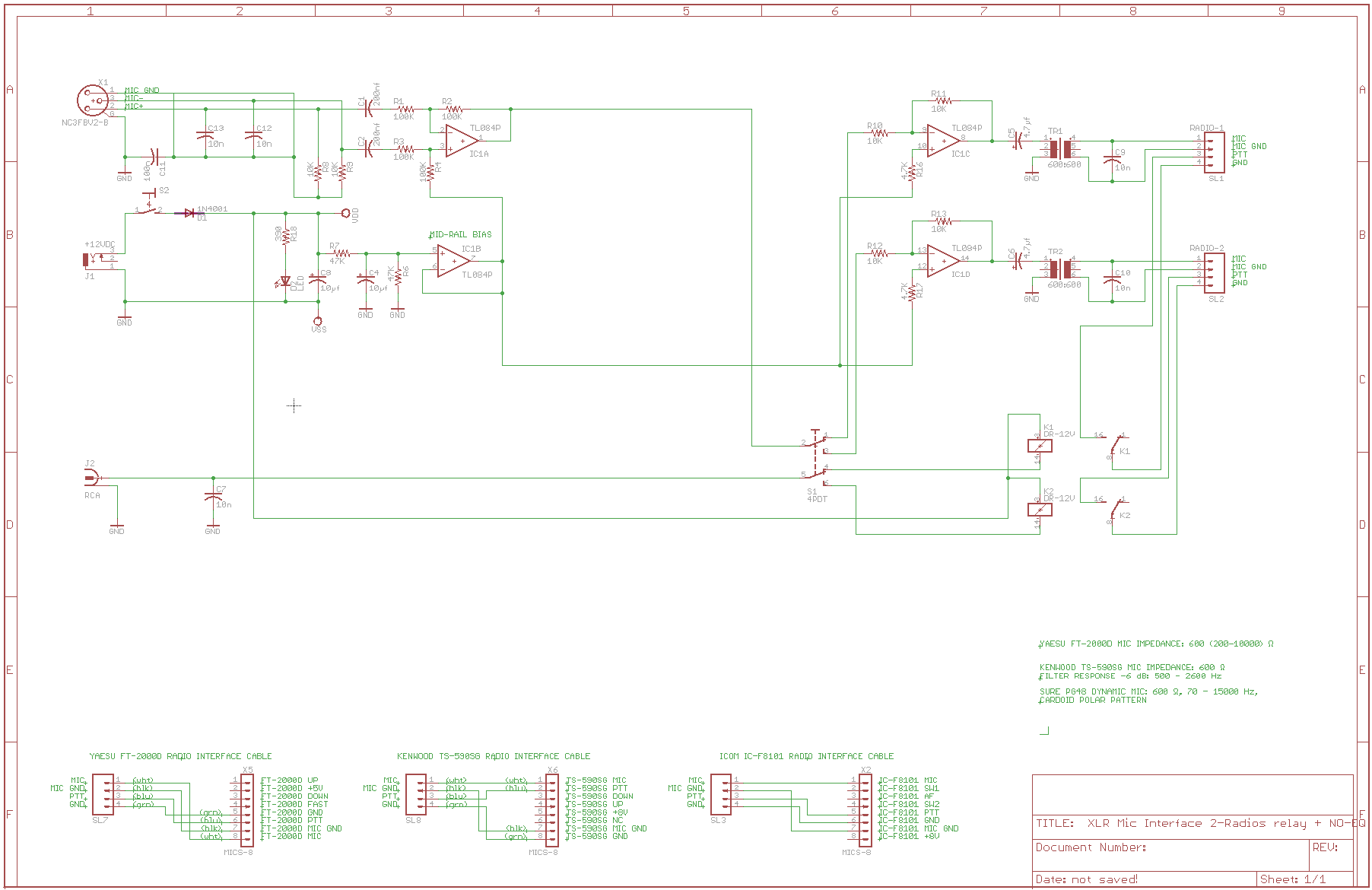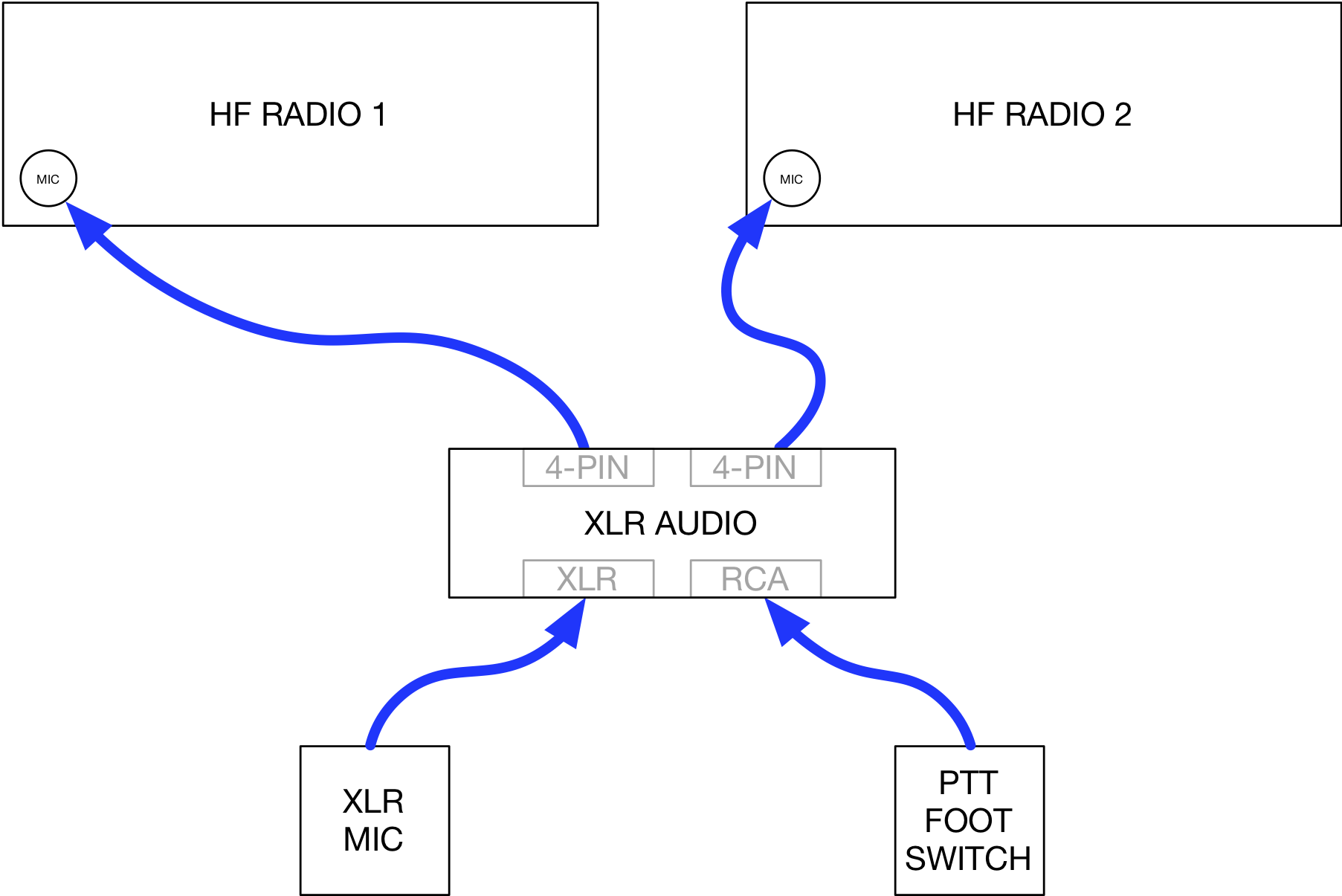This project was created with the goal of using a single boom mounted XLR microphone, in conjunction with a foot switch operated PTT, to support operation of two separate HF radios to allow honds free operation. Features include:
- Ground isolated interface for both Push-To-Talk and Audio signals (no ground loops)
- A single toggle switch to select which radio receives audio and PTT signals
- A simple 4-pin connector that allows an adapter cable to interface the device to any radio, using PTT, PTT ground, Mic and MIC ground signals.
- +13.8 Volt operation
Adapter cables were constructed for a Yaesu FT-2000D, Kenwood TS-590SG and Icom IC-F8101. All three radios have shown proper operation and no audio anamolies. Because no audio equalization is implemented in this simple design, it is necessary to use the transmitter audio equalization settings in the FT-2000D and TS-590SG to acheive a good audio frequency response. Radios that do not provide internal transmit audio equalization, such as the IC-F8101, require external audio equalization to achieve good audio response, and a follow up project will implement an analog 3-band equalizer with the XLR microphone interface to better support these radios.
No attempt was made to generate a PCB layout and the single instance of an implementation was constructed using hand-wired techniques.
The following schematic depicts the XLR Microphone Interface for 2-Radios. An Eagle CAD schematic file can be downloaded by right clicking HERE and select the option to download or save the file from the contextual menu. Please note that the Eagle CAD file is not sufficiently correct for direct PCB layout due to compromises in component selection and incomplete validation of connections. The reader is left to complete such tasks if a PCB is desired.

The above was implemented using a SHURE PG-48 microphone with good results. Although VOX operation is not commonly used with the author's equipment, VOX operation was validated and appears to operate properly.

Configuration has two interface cables routed from the XLR audio interface to the HF radios, and a push-to-talk foot-switch routed to an RCA jack on the XLR audio interface, and an XLR microphone connected directly to the XLR audio interface. Operation involves setting a switch on the XLR audio interface box to select radio 1 or radio 2. XLR-Microphone audio and PTT keying (via the push-to-talk foot-switch) is routed to the selected radio.
Icom IC-F8101 Microphone Connector Notes:
Although the Icom IC-F8101 uses an 8-pin connector that is similar to the 8-pin connector that is standard
on HF Amateur Radio equipment, the diameter of the plug is subtantially smaller than the standard 8-pin
connector. Mechanical drawings of 8-pin connectors that indicate dimensions are scant and it is difficult
to locate an appropriate connector. The following connector is available from DigiKey and is known to
properly insert into the IC-F8101 and provide proper connection, albeit without locking the connector
after insertion (the radio uses a bayonet lock while this connector has a threaded lock):
Amphenol LTW BD-08BFFA-SL7001
The threaded sleeve will fit over the receptical on the radio but will not lock down the connector, so
there is no retention with the above connector. For a fixed installation, and because the connector
does not provide shielding (both the plug and receptical are nylon), insertion without retention is not deemed to be an issue.
The bayonet locking version of the above connector is:
Amphenol LTW BD-08BFFA-LL7001
The bayonet version of the connector has not been acquired or tested at the time of this writing.
Posted 10 March 2019